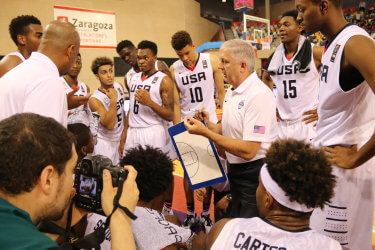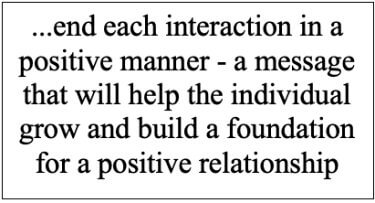(3 Minute Read)
The whistle blows signaling the completion of the drill. Some of the nation’s best young athletes, 16 and 17-year old basketball phenoms gather around Coach Showalter. The setting is the USA Basketball U16-U17 Junior National Team Training Camp at the Olympic Training Center in Colorado Springs.

Flanked by the physical size of the young men, Showalter gains their attention. He offers feedback on the recently completed drill, then gradually steps back presenting his hands to the two players nearest him. At the same time, he encourages the rest of the huddle to do likewise. The young athletes and support staff lock hands and begin to form a large circle. They all face each other, looking towards the center of the circle, each person linked to another player or coach.

Showalter turns to his right and looks up at a tall, slender 16-year-old and asks him to share one thing the teammate standing to his right did in practice today, that made the team better. The young athlete gathers his thoughts and describes how his teammate dove on the floor for a loose ball – driving the intensity up for the entire practice. This type of exchange continues all the way around the circle. Each player or staff member sharing something positive that occurred during the practice session, recognizing another member of the team.

This activity is called the Communication Circle, and Showalter uses it each day to end practice. The questions are never the same. The purpose is to generate interaction and open up communication channels for relationship building. By finishing practice with the Communication Circle the players establish a bond with their teammates and develop confidence in themselves. The experience provides a positive way to end their time together – serving as motivation to come back for the next practice session.
As a leader, you will be tasked to determine the ending of numerous situations. For example, one on one conversations, staff meetings, or the completion of a collaboration project. It is within these small daily interactions where the leader can choose to leave everyone feeling more upbeat, confident, and connected to each other.

Coach Showalter understands that not every moment is positive, the leader may need to exert their power to provide discipline, motivation, or teach an important lesson. Nonetheless, he still strives to end each interaction in a positive manner – a message that will help the individual grow and build a foundation for a positive relationship. To implement this approach as a leader, consider the following three strategies.
- Reflect on your most recent interaction with others. Did it end in a positive manner? What actions could you take to “end on a positive” the next time?
- Identify opportunities where you can “end on a positive, by making a list of moments in your role as a leader where you interact with those you lead.
- Draft a few activities (i.e. communication circle) that you can implement in future scenarios to end on a positive.
